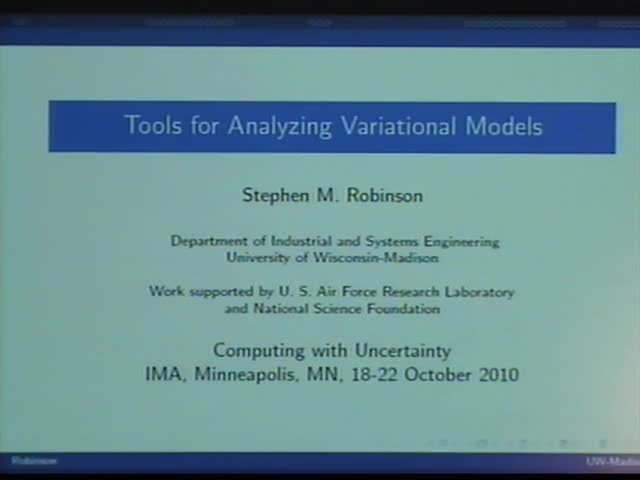Tools for analyzing variational models
Presenter
October 19, 2010
Keywords:
- Variational methods
MSC:
- 35A15
Abstract
Many problems of optimization and equilibrium result in models in the general class of variational conditions, sometimes in a generalized form. Thus, if the problem is one of optimization, we first write optimality conditions and then try to compute with those. If instead of an optimization model we have a model involving some kind of equilibrium, then we write conditions expressing the equilibrium situation and try to solve those conditions. In general, such conditions will involve nonsmoothness (discontinuities in the first derivative) in an essential way. This lecture will present a set of mathematical tools useful for analysis of many of the variational conditions that appear in the formulation and solution of practical problems. In essence, these enable us to do in the presence of nonsmoothness many of the things that one could do with calculus if the problem functions were smooth. They do so by exploiting the fact that the nonsmoothness in these conditions is of a highly structured kind. Although some fairly substantial mathematical analysis underlies the construction of these tools, our emphasis in this lecture will not be on the underlying mathematics. Rather, it will be on explaining what the tools are, how they are adapted to the forms of the variational conditions occurring in various problems, what they can do when applied to those conditions, and how to apply them in some example cases. We will describe the mathematical foundation and indicate how it supports the tools' capabilities, but will not go into much detail about it.
